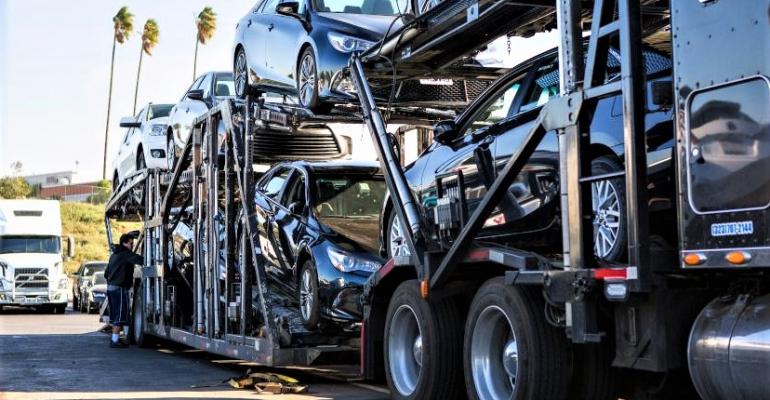Transportation costs are going up in the wholesale used-car industry for a variety of reasons, including a shortage of drivers, a shortage of transport trucks and a big increase in the average distance used vehicles need to be moved after a sale, according to Manheim.
“Low transporter supply is driving up costs and impacting service levels,” says Joe Kichler, vice president-Manheim Logistics.
Using Manheim’s network, clients including captive and non-captive finance companies, financial institutions and dealers transported about 2 million vehicles in 2020, down from about 2.5 million in 2019, the company says.
Manheim doesn’t own the car haulers, but it has a network of about 6,500 transportation partners. Manheim also facilitates moves by connecting transporters with dealers who prefer to arrange their own moves.
Dealers on average are buying and selling cars over much greater distances, Kichler (pictured, below left) says. In the first quarter of 2021, the average distance vehicles were transported was 430 miles (690 km), vs. 225 miles (360 km) in the first quarter of 2020, Kichler says in a July 8 webinar.
That’s partly because dealers must cast a wider net to find the most desirable vehicles during the ongoing shortage of used-car inventory. It’s also because digital commerce has made remote transactions so much easier, instead of having to visit auctions in person.
Meanwhile, transporters are experiencing a shortage of drivers because of the explosion in demand for “last-mile” delivery.
“Trucker wages are going up. They’re struggling to find drivers,” Kichler says. At the same time, compared with delivering cars, delivering packages for Amazon, for instance, is a lot easier to learn, he says.
 It gets worse: High diesel-fuel prices are also driving up costs, Kichler says. In addition, COVID-19-related business shutdowns early in the pandemic last year drove a lot of “mom-and-pop” car haulers out of business, he says.
It gets worse: High diesel-fuel prices are also driving up costs, Kichler says. In addition, COVID-19-related business shutdowns early in the pandemic last year drove a lot of “mom-and-pop” car haulers out of business, he says.
These factors are driving up costs in an environment where new and used cars are in short supply. That’s likely to get worse as new-car production and used-car inventories get back to more normal levels and volume increases, he says.
And in the medium to long term, a substantial rise in electric-vehicle share is also likely to drive up transport prices. That’s because EVs are heavier than similarly sized vehicles with internal-combustion engines, so car haulers can carry fewer vehicles in a single load, Kichler says.
“Be careful what you wish for,” says Jonathan Smoke, Manheim chief economist, “in terms of normalizing inventory and adding more EVs.”





